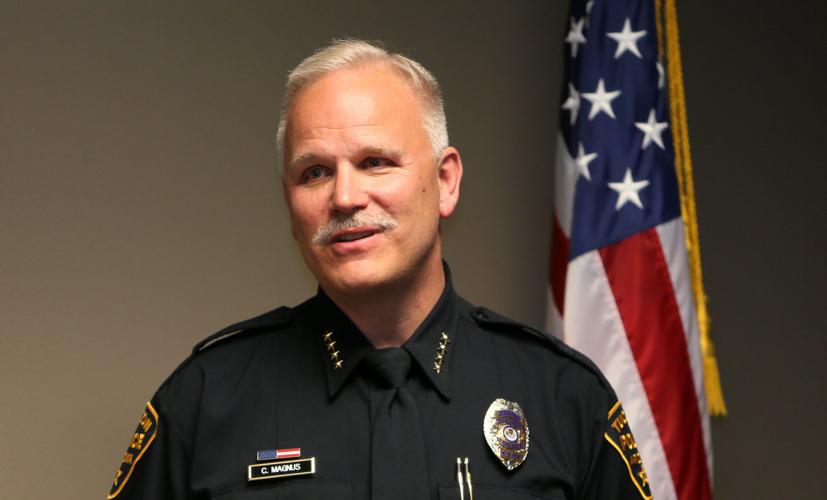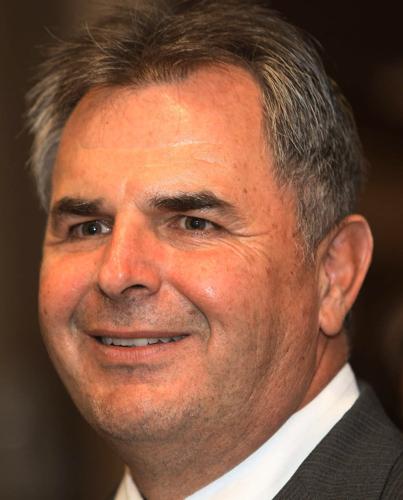A new era of deportations began last week, raising pressure not just on those who might be rounded up but also on local police likely to get caught in the middle of new immigration conflicts.
When Guadalupe Garcia de Rayos checked in at the immigration office in Phoenix Wednesday — something that had been a regular routine in the Obama era — she ended up detained, then deported to Nogales, Sonora. On the way to Mexico, the mother of two U.S. citizens passed through Tucson, the hometown of the man whose Social Security number she had, fatefully, used to get a job.
The man, a 32-year-old Tucson native named Alex Andrade, has not had any problems as a result of her crime, he told me Friday. In fact, the courts did not even treat him formally as a crime victim in the case.
The Obama administration’s deportation priorities apparently exempted Garcia de Rayos because her crime, though a felony, was “a state or local offense for which an essential element was the alien’s immigration status.”
But the crime she had committed, using Andrade’s SSN and another man’s alien ID number, made her highly deportable under a Jan. 25 order by President Trump. It targets anyone in the country who has committed any crime — not just felonies or repeated misdemeanors. It also targets anyone charged with a crime in cases that haven’t been resolved. It even targets those in the country illegally who have “committed acts that constitute a chargeable criminal offense,” a catch-all category for pretty much anybody.
Last week, the Los Angeles Times calculated how many of the estimated 11 million people in the country illegally are now considered priorities for deportation. They came up with around 8 million. And last week federal immigration agents got to work, conducting operations that netted hundreds of arrests.
But these federal agents alone can’t be expected to find and deport that many targeted people. There simply aren’t enough of them. That means, if Trump really wants to achieve this goal, local police will be called on to help.
Trump has said as much in his orders. He wants to revive the Secure Communities programs that reigned from 2008 to 2014 and counted on deputizing local police as immigration officers.
In one Jan. 25 executive order, Trump laid out this plan: “It is the policy of the executive branch to empower state and local law enforcement agencies across the country to perform the functions of an immigration officer in the interior of the United States to the maximum extent permitted by law.”
The change was dismaying to Tucson Police Chief Chris Magnus. I interviewed him Monday before he went to Washington, D.C., for a conference of police chiefs where both President Trump and Department of Homeland Security Secretary John Kelly spoke.
“I think everybody understands that there are some dangerous, violent folks out there who need to go back to whatever country they came from,” Magnus said. “When we start going beyond that and start talking about stepping away from the Priority Enforcement Program, PEP, that a lot of police chiefs and sheriffs and community leaders from around the country have worked to create — to step away from that is a mistake.”
“The old Secure Communities model that says every undocumented person is the same — they’re all criminals and they’ll have to go — is not only really harmful to the community policing philosophy, but it also makes communities less safe,” Magnus said. Secure Communities “was completely unworkable and it created a climate that made it a lot harder to fight crime and get cooperation from people that we need to have relationships with.”
Magnus and new Pima County Sheriff Mark Napier agreed, when I interviewed them separately, that resources are too scarce for local police departments to start engaging in immigration enforcement.
“Local law enforcement’s first objective is to do traditional law enforcement for the constituents of their jurisdiction,” Napier said. “That should always be the priority. My department and TPD are stressed just to be able to do that.”
In his first months as sheriff, Napier, a Republican, has retained the same policy that former Sheriff Chris Nanos, a Democrat, had on how to inform immigration officials when an undocumented inmate is to be released. If ICE has told the jail that they want to take custody of an inmate, the jail will inform them when that inmate starts the process of being released.
Usually, that gives immigration officials 1ƒ to two hours of notice, Napier said. If they don’t show up, the person goes free under whatever terms their release dictates.
But a relatively hands-off policy by our top local police chiefs doesn’t mean officers won’t come into conflicts nonetheless. In recent years, protesters repeatedly showed up when TPD officers called Border Patrol agents for help with criminal suspects who officers had concluded were in the country illegally. Protesters blocked streets and climbed under vehicles. It got heated.
Similar scenes occurred in Phoenix on Wednesday night. Protesters blocked all the exits to the ICE facility where Garcia de Rayos was being held, going so far as to climb into the wheel wells of ICE vehicles. Phoenix police showed up and, after warning the protesters, made several arrests.
Don’t be surprised to see similar scenarios cropping up in Tucson soon.
“There are a lot of community advocacy groups. Then you have protection networks,” Juanita Molina of the Border Action Network told me Friday. “We’re going to see a lot of civil disobedience and resistance.”
Even more complicated scenarios could present themselves. What if, I asked Magnus, immigration officers show up at a Tucson home to arrest a deportable person and the U.S. citizen family members call 911 asking for help dealing with the federal agents?
“Can we or would we stand in the way of federal agents doing their job? I don’t think that’s realistic,” he said. “I’m afraid the answer to that is no. I hope it doesn’t come to that, that’s for sure.”
Based on last week’s events, though, no one should be surprised if it does.







